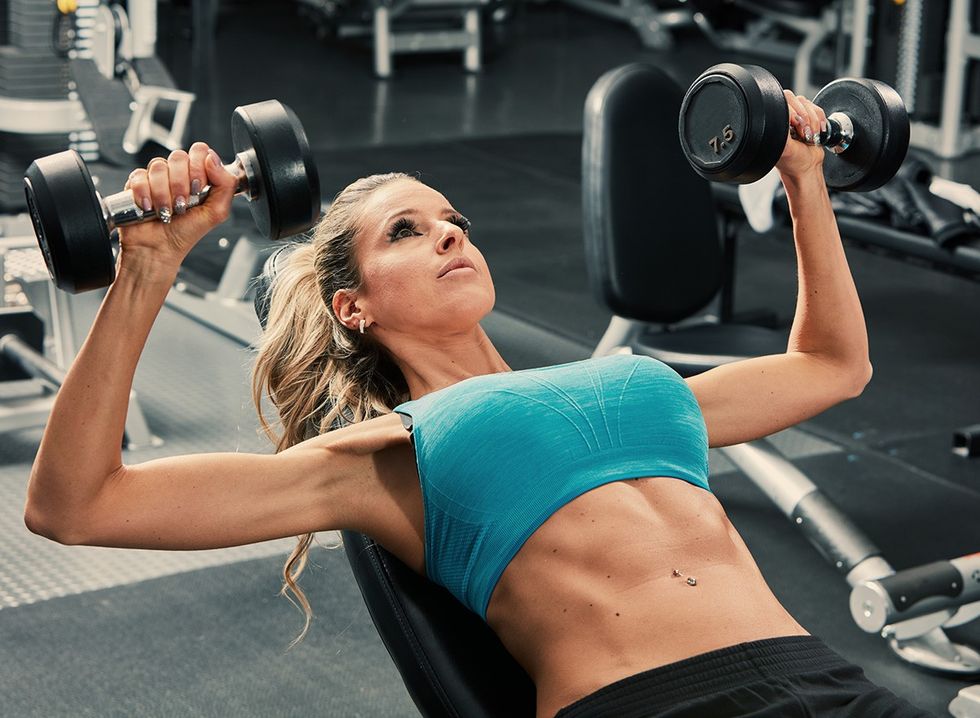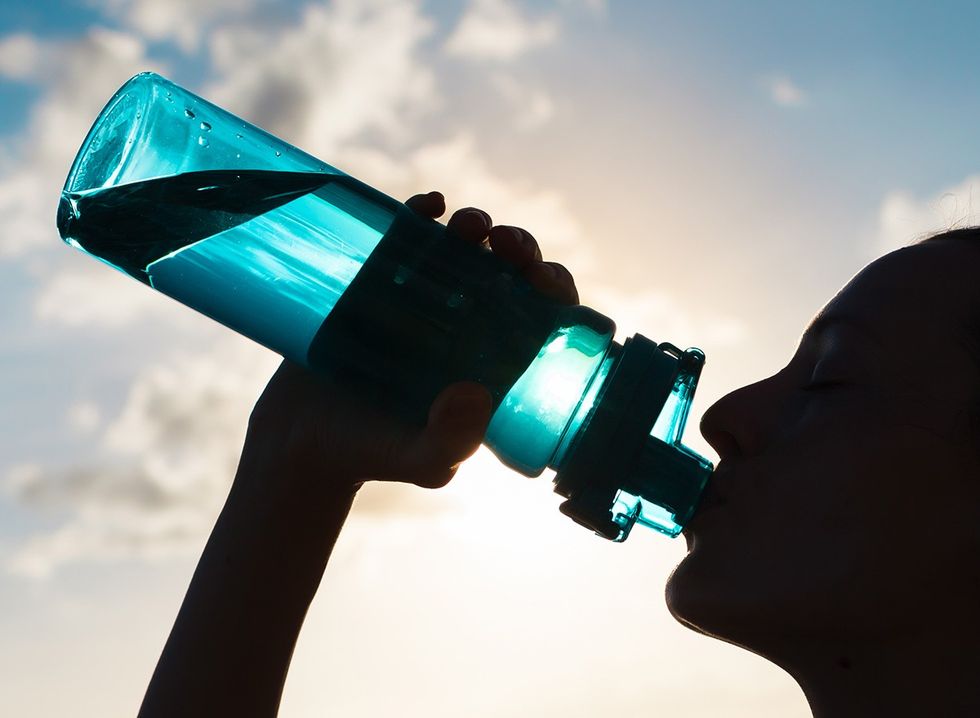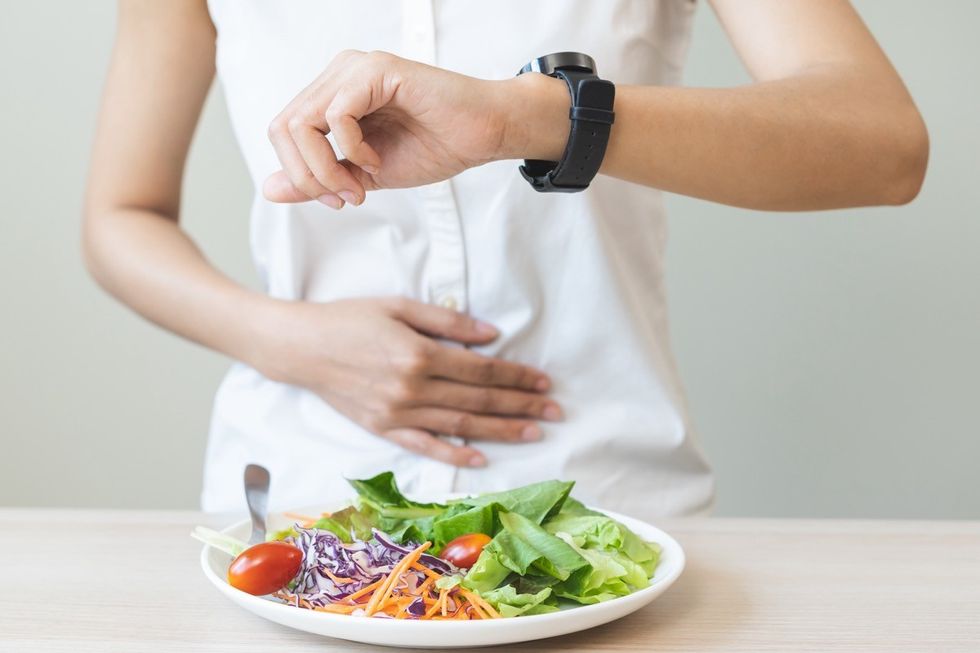With so much misinformation online about health and weight loss, it’s no wonder people feel overwhelmed about what they should or shouldn’t be doing. Enter Dr. Mikhail "Mike" Varshavski D.O., who wants to help clear up the confusion surrounding common weight loss myths. Dr. Mike goes through 15 myths related to diet and fat-burning and sticks to the facts with his advice and recommendations. Here’s what he has to say.
Drink Black Coffee

Claim: “Drink black coffee: the caffeine will boost your metabolism.” Yes, there is some truth to this, Dr. Mike says. “Caffeine is a stimulant so it could potentially boost your metabolism. But why I like this statement is because black coffee means that it doesn't have excess calories from sugar, milk, creamer, all of that.” He also likes that black coffee can be enjoyed while intermittent fasting.
Watch Yourself Eat

Claim: “Hang a mirror in front of your dining table. Studies show watching yourself reduces the amount of food you eat.” No, Dr. Mike emphatically states. This is not a thing. “If you want to hang a mirror in front of your dining table because of the decor, go right ahead.” But not, as he puts it, to hate yourself.
Use Smaller Plates
Claim: “Use smaller plates and bowls to serve your own food. This is an optical trick that will give you a full sensation from seeing a clean plate.” Yes, says Dr. Mike, because it encourages portion control, which is a major issue for people who are overweight or obese.
Intermittent Fasting

Claim: “Participate in intermittent fasting (IF) although it may also reduce muscle mass.” This depends, Dr. Mike says. “For some people like myself, intermittent fasting works. Because you’re eating in a specific window, you’re going to eat less calories.” IF also has favorable effects outside of weight loss, he says.
Protein Powder Instead of Food
Claim: “Replace your normal high-calorie protein intake with whey protein powder.” Probably not, says Dr. Mike. “This one I am hesitant to recommend for some folks. I’m not a huge fan of getting my proteins from supplements.” Dr. Mike says it’s better to get protein from a food source, so you also get the benefits of healthy fats (for example, from tuna and salmon).
Chew Slowly

Claim: “Chew more slowly. Your brain can take time to signal to your stomach that you’re full, so being patient with how quickly you eat can allow your brain time to cut you off before you overeat.” Kind of! Dr. Mike recommends chewing thoroughly over chewing more slowly. This gives you time to signal to your body that you’re fuller—eating to the point of feeling satiated rather than overeating.
RELATED: I Lost 75 Pounds in 6 Months, Eating the Same Thing Every Day
Spoil Food

Claim: “Spoil food you don’t want or need to eat.” No—this is terrible advice. Do not spoil food with salt just to stop yourself from eating it, Dr. Mike says. “Not only will this create a very disordered eating pattern where you’re destroying food instead of creating a healthy relationship, but you’re also getting rid of food that someone can eat.”
Drink Green Tea

Claim: “Drink green tea: It’s loaded with powerful antioxidants which work synergistically with caffeine to enhance fat burning.” Dr. Mike loves green tea and recommends drinking it due to the many antioxidants it contains, but he stops short of saying it burns fat. Be mindful of drinking it too close to bedtime, as it does have caffeine.
Do HIIT

Claim: “Interval training: Short bursts of intense exercise followed by longer stretches of mild exercise.” Go for it, Dr. Mike says. “It promotes weight loss. It promotes muscle building. It promotes heart rate variability.”
Accept Hunger

Claim: “Get used to and accept the feeling of being hungry. You can’t lose weight without enduring hunger.” Not true! “You can lose weight without feeling hungry and suffering with it,” Dr. Mike says. “Intuitive eating is something that many of my patients have done quite well. You only eat to the point where you are no longer hungry.”
RELATED: This Plan Is How to Lose 5 Percent Body Fat In 2 Weeks
Lift Weights

Claim: “Lift weights instead of just doing cardio. Not only does this cause you to lose fat, but you also build more muscle to replace it.” Dr. Mike recommends doing both. “Oversimplified but a decent concept,” he says. “They have different benefits. For example, going for a run is really good for your heart. When you’re lifting weights, you’re not only burning fat and using calories while you’re exercising, you’re also doing that when you recover.”
Keep Snacking
Claim: “Snack often. This will prevent ‘metabolic slowdown’ where your metabolism stops if there's nothing there to digest. While snacking, your metabolism is forced to stay engaged.” Nope! Dr. Mike says snacking is not mandatory for successful weight loss and that plenty of people eat just a few meals a day and do as good a job as those who eat smaller meals and snacks.
Drink Water Before Meals

Claim: “Drinking water 30 minutes before a meal will help your body burn calories faster and therefore lose weight.” No—but water is very important, Dr. Mike says. Water can stretch out your stomach, making you feel more full. Plus, there is a water-induced thermogenesis process. Water helps remove waste, and it can help fuel performance.
RELATED: The Ultimate Guide to Getting Fit as a Pear Body Type
Meal Prep

Claim: “Begin meal prepping. Plan out all your meals for the week and spend a few hours cooking them/storing them ahead of time. This will allow you to eat a prepped meal instead of ordering takeout.” Yes! Dr. Mike loves this advice because you get to control what you eat and all the ingredients. Meal prepping also stops you from ordering out when you’re tired.
Weight Loss Is Diet First
Claim: “While exercise can aid in weight loss, diet accounts for the vast majority of the equation behind losing weight, and it’s possible to lose weight without adjusting your workout routine at all.” Yes! Dr. Mike emphasizes that exercise is incredibly important for overall health and wellness but that when it comes to weight loss, diet is key. “Sleep, exercise, your mental health, all of these things need to be taken into account,” he says. And if you enjoyed this article, don't miss 20 Incredible Ozempic Success Stories of All Time.
















 Shutterstock
Shutterstock Shutterstock
Shutterstock Shutterstock
Shutterstock Mike Varshavski/YouTube
Mike Varshavski/YouTube Shutterstock
Shutterstock Shutterstock
Shutterstock Shutterstock
Shutterstock Shutterstock
Shutterstock
 Shutterstock
Shutterstock Shutterstock
Shutterstock Shutterstock
Shutterstock Shutterstock
Shutterstock Shutterstock
Shutterstock Shutterstock
Shutterstock Shutterstock
Shutterstock Shutterstock
Shutterstock Shutterstock
Shutterstock
 Shutterstock
Shutterstock Shutterstock
Shutterstock Shutterstock
Shutterstock Shutterstock
Shutterstock Shutterstock
Shutterstock Shutterstock
Shutterstock


 I'm a Nutritionist and These 9 High-Protein Snacks Keep My Clients Full While Losing 50 Pounds
I'm a Nutritionist and These 9 High-Protein Snacks Keep My Clients Full While Losing 50 Pounds
 Shutterstock
Shutterstock 2. Processed FoodsShutterstock
2. Processed FoodsShutterstock Shutterstock
Shutterstock Shutterstock/Prostock-studio
Shutterstock/Prostock-studio Shutterstock
Shutterstock Pro TipsShutterstock
Pro TipsShutterstock Shutterstock
Shutterstock Shutterstock
Shutterstock Shutterstock
Shutterstock Don’t Drink as Much AlcoholShutterstock
Don’t Drink as Much AlcoholShutterstock Most Women on GLP-1s Are Making a Few Common MistakesShutterstock
Most Women on GLP-1s Are Making a Few Common MistakesShutterstock Soda and Sugary DrinksShutterstock
Soda and Sugary DrinksShutterstock Shutterstock
Shutterstock Eat BreakfastShutterstock
Eat BreakfastShutterstock And Improve Insulin SensitivityShutterstock
And Improve Insulin SensitivityShutterstock Belly Flab Strip Tip: Sugar and Fat Calories Leave Its Mark on Your BodyShutterstock
Belly Flab Strip Tip: Sugar and Fat Calories Leave Its Mark on Your BodyShutterstock Shutterstock
Shutterstock The Drugs Mimic the GLP-1 Hormone Naturally Produced by the BodyShutterstock
The Drugs Mimic the GLP-1 Hormone Naturally Produced by the BodyShutterstock 3. Deep-Fried ItemsShutterstock
3. Deep-Fried ItemsShutterstock